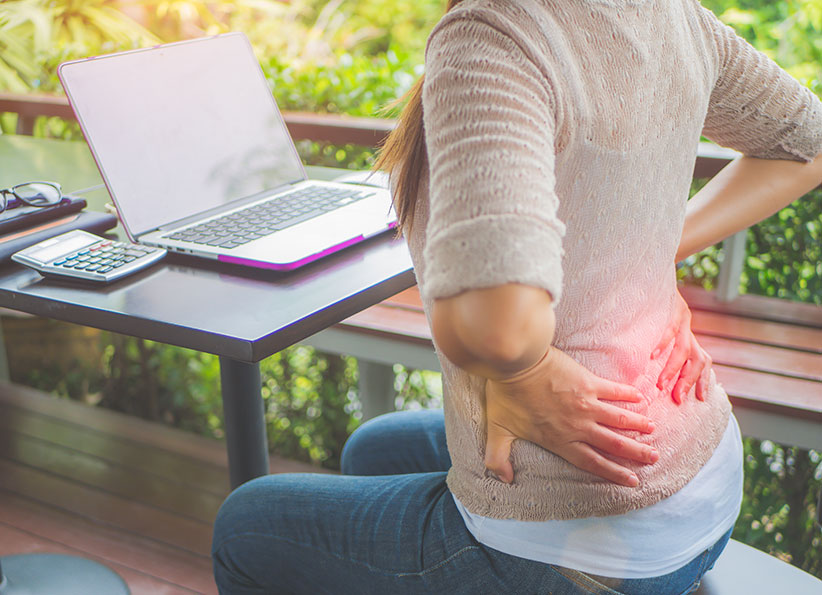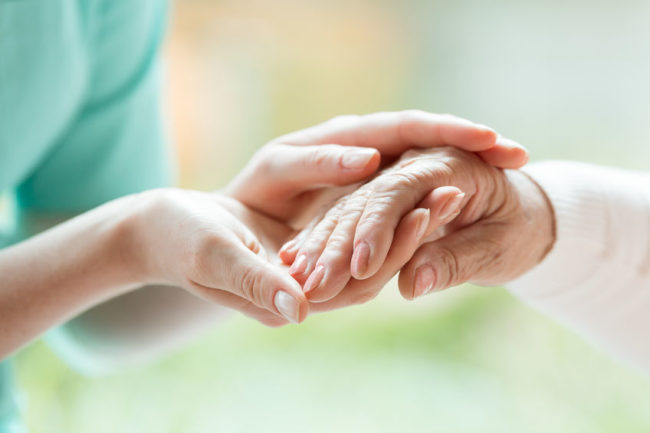By Suzanne Ausnit —
Back pain is a good news versus bad news equation. The bad news is there is no single miracle cure. And in most cases, it’s not going to disappear overnight. The good news is that living free of back pain-free is actually possible if you’re willing to commit to making a healthy spine part of your daily life.
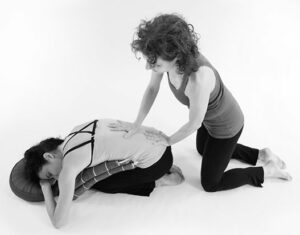
For most of us, reclaiming a healthy back requires changing bad posture and movement habits we’ve developed over a lifetime. Healthy spine habits are, after all, just as important as eating right, getting enough sleep and exercising.
Ignore back pain at your own risk. It is the leading cause of disability and the most common reason to miss work. Approximately 50 percent of working Americans report having back problems each year and it’s estimated that 80 percent of the world’s population will experience back problems at some point in their lives.
So, what are the causes, how can we prevent back pain and how can we cure back pain? Back pain usually is the result of a combination of skeletal problems, poor movement and stress. Thankfully, unlike organic issues, you have the power to overcome and improve these elements, giving you a long-term solution to your discomfort.
A pain-free back starts with learning to be aware of your body—awareness is something that is a central component of The Feldenkrais Method. What is your body telling you when you move, sit, stand or simply stay still? As you build awareness, you’ll deepen your understanding of how to move better and you’ll start integrating these new patterns of movement into your life. The ultimate goal is to catch yourself before you do something that could irritate your back.
Back pain can be the byproduct of many things—some obvious like poor posture when sitting or standing. Others causes may be less apparent, such as chronic stress. Problems in other areas of your body, like in your hips or shoulders, can create unhelpful compensations that also lead to back pain. Remember, your body is an integrated whole. A small change in one part can and usually does affect the rest of it.
Start your re-education by paying attention to how you sit, which is critical to a healthy spine and a pain-free back. It doesn’t have to take a lot of time. Begin by reminding yourself to periodically slide to the front of your chair, root your feet and center your weight on both sitting bones.
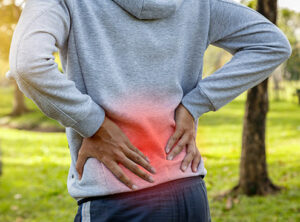
You can also build awareness by taking the time to notice how you sit down and stand up from your chair, which you do many times a day. Do you lead from your hip joints or from your lower back? Each time you make any adjustment, explore if there is a back-friendly way to move or sit instead of unconsciously repeating your old problematic patterns.
Reducing stress and having a positive attitude can also go a long way to relieving back pain. Stress resulting in unnecessary muscle contraction or tension in the jaw, neck, throat, belly and eyes can wreak havoc with your back and other parts of your body. One of the easiest and quickest ways to reduce stress is by becoming aware of your breathing. Start by taking a few moments to notice how you are breathing when you’re at a stoplight, standing in an elevator or waiting in line.
Are you holding your breath, gripping your abdomen, chest or jaw? If so, consciously begin to soften those areas and you’ll find that your breathing will flow more freely and smoothly. Try adding a pause at the end of an exhalation. This will help you settle your mind and help you relax.
The stress of chronic pain can make relaxing challenging, often leading to feelings of depression and hopelessness. Don’t give up. You can reclaim your body, your potency and your wellbeing.
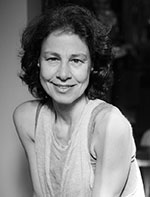
About Suzanne Ausnit
Suzanne Ausnit is a movement therapist (think body detective) who is committed to helping people heal through gentle-touch programs that focus on her clients develop their untapped sixth sense—proprioception or body awareness. A former journalist, she has spent thousands of hours training to become a certified yoga teacher, Feldenkrais ® practitioner and Child’Space practitioner. This journey led her to develop the Move2Live Method, which focuses on cultivating better body mechanics (self-organization) and flexible breathing that aim to have client move more effectively and without pain. She will release her first book, Back To Normal, later this year.
Please visit Move2livenow.com to learn more.

